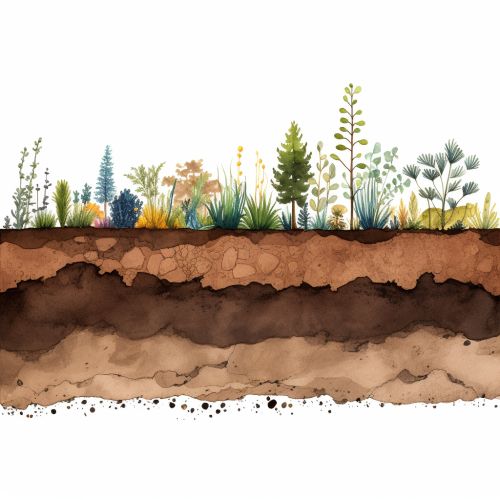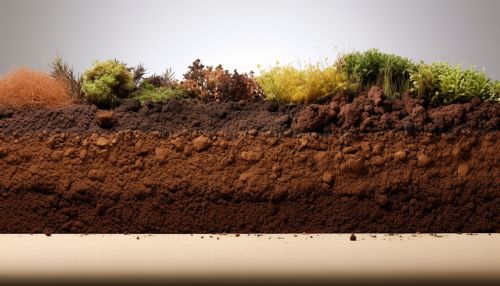Soil formation
Introduction
Soil formation, or Pedogenesis, is a complex process involving the interaction of five key factors: parent material, climate, topography, organisms, and time. These factors interact in various ways to create the diverse range of soils found across the globe. The process of soil formation is ongoing and can take thousands to millions of years to form a mature soil profile.
Parent Material
The Parent Material is the initial state of the soil, which can be either mineral or organic. Mineral parent materials include rocks and minerals, while organic parent materials are derived from the accumulation of plant and animal material. The type of parent material determines the mineral composition and texture of the soil, which in turn influences its physical and chemical properties.


Climate
Climate plays a significant role in soil formation by influencing the rate of weathering and the type of vegetation that can grow in a particular area. Temperature and precipitation are the two main climatic factors that affect soil formation. High temperatures and rainfall promote chemical weathering and leaching, leading to the formation of highly weathered soils. In contrast, cold and dry climates favor physical weathering, resulting in less weathered soils.
Topography
Topography or the physical features of the land surface, influences the movement of water and thus the distribution of soils. Slopes, valleys, and flat areas each have different soil formation processes. For instance, soils on slopes are often shallow and less developed due to erosion, while soils in valleys may be deep and well developed due to the accumulation of eroded material.
Organisms
Living organisms, including plants, animals, and microorganisms, contribute to soil formation by adding organic matter and influencing the soil's physical structure. Plants contribute organic matter through leaf fall and root death, while animals and microorganisms break down this organic matter, releasing nutrients back into the soil. This process of organic matter decomposition is a key aspect of soil formation.
Time
Time is a crucial factor in soil formation. It takes thousands to millions of years for a mature soil profile to develop. The length of time required for soil formation depends on the intensity of the other soil-forming factors and the type of parent material. Generally, soils formed from hard rocks take longer to develop than those formed from softer materials.
Soil Horizons
During the process of soil formation, distinct layers or horizons develop within the soil profile. These horizons, designated as O, A, E, B, C, and R, each have unique characteristics and play different roles in the soil ecosystem. The O horizon is the topmost layer, rich in organic matter. The A horizon, also known as topsoil, contains a mix of organic matter and mineral particles. The E horizon is a zone of leaching, where nutrients are washed out. The B horizon, or subsoil, is where leached materials accumulate. The C horizon consists of partially disintegrated parent material, and the R horizon is unweathered bedrock.


Soil Classification
Soils are classified based on their properties and the arrangement of soil horizons. The most widely used soil classification system is the Soil Taxonomy developed by the United States Department of Agriculture. This system classifies soils into 12 orders, including Alfisols, Andisols, Aridisols, Entisols, Gelisols, Histosols, Inceptisols, Mollisols, Oxisols, Spodosols, Ultisols, and Vertisols. Each order represents a distinct kind of soil that has developed under specific conditions of climate and vegetation.
Conclusion
Soil formation is a dynamic and ongoing process that shapes the Earth's landscapes. Understanding the process of soil formation and the factors that influence it is crucial for managing our soil resources sustainably. As the foundation of terrestrial ecosystems, soils play a vital role in supporting life on Earth.
